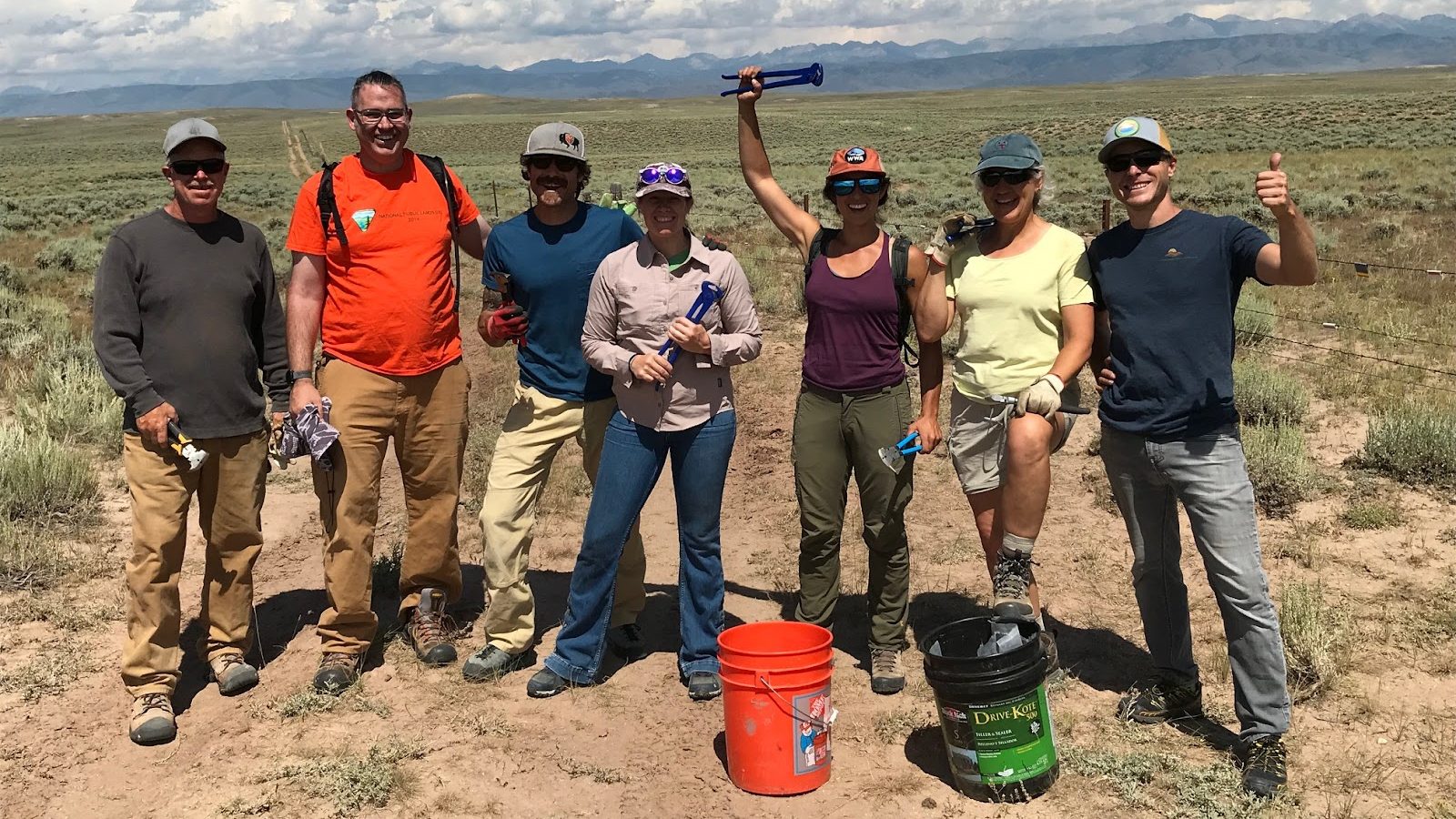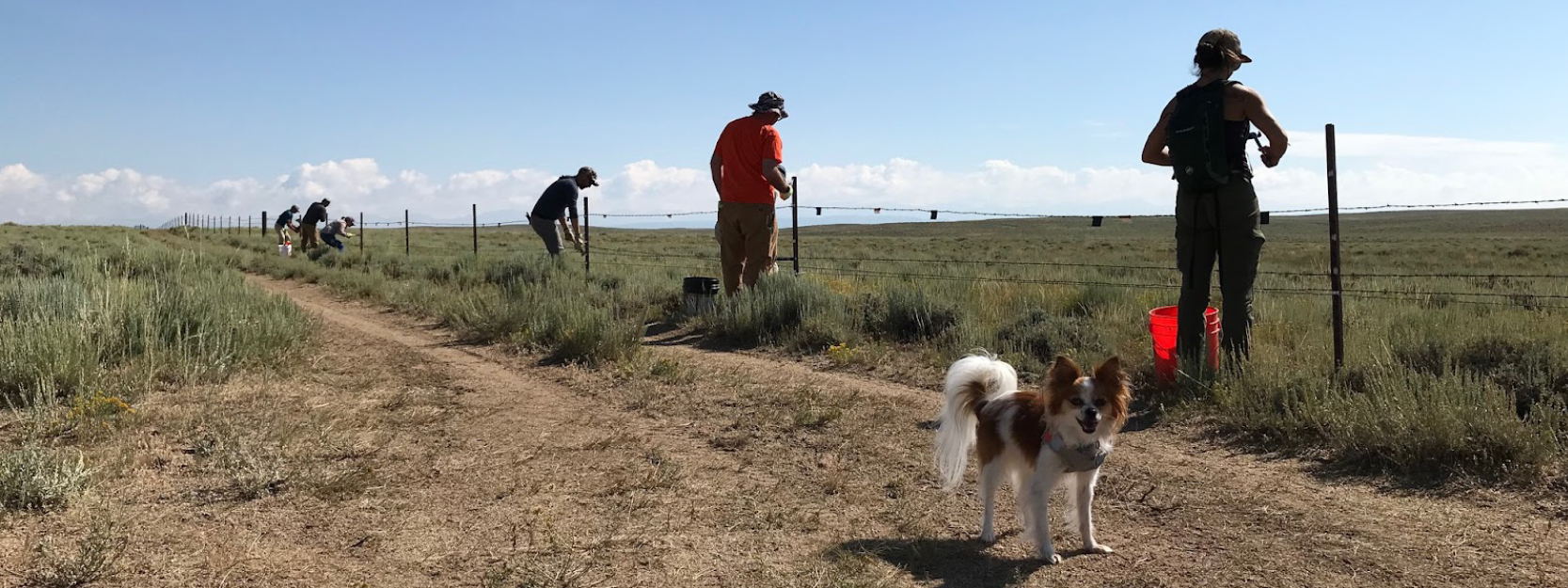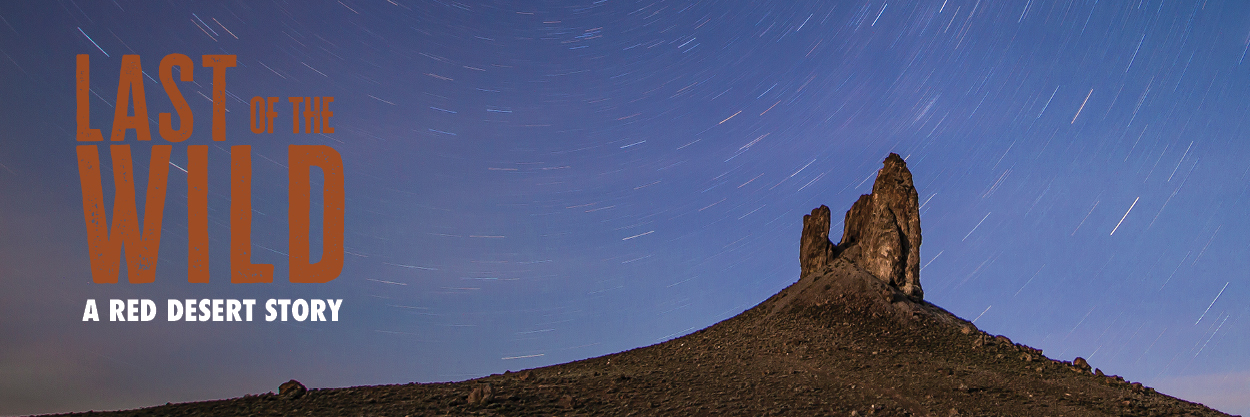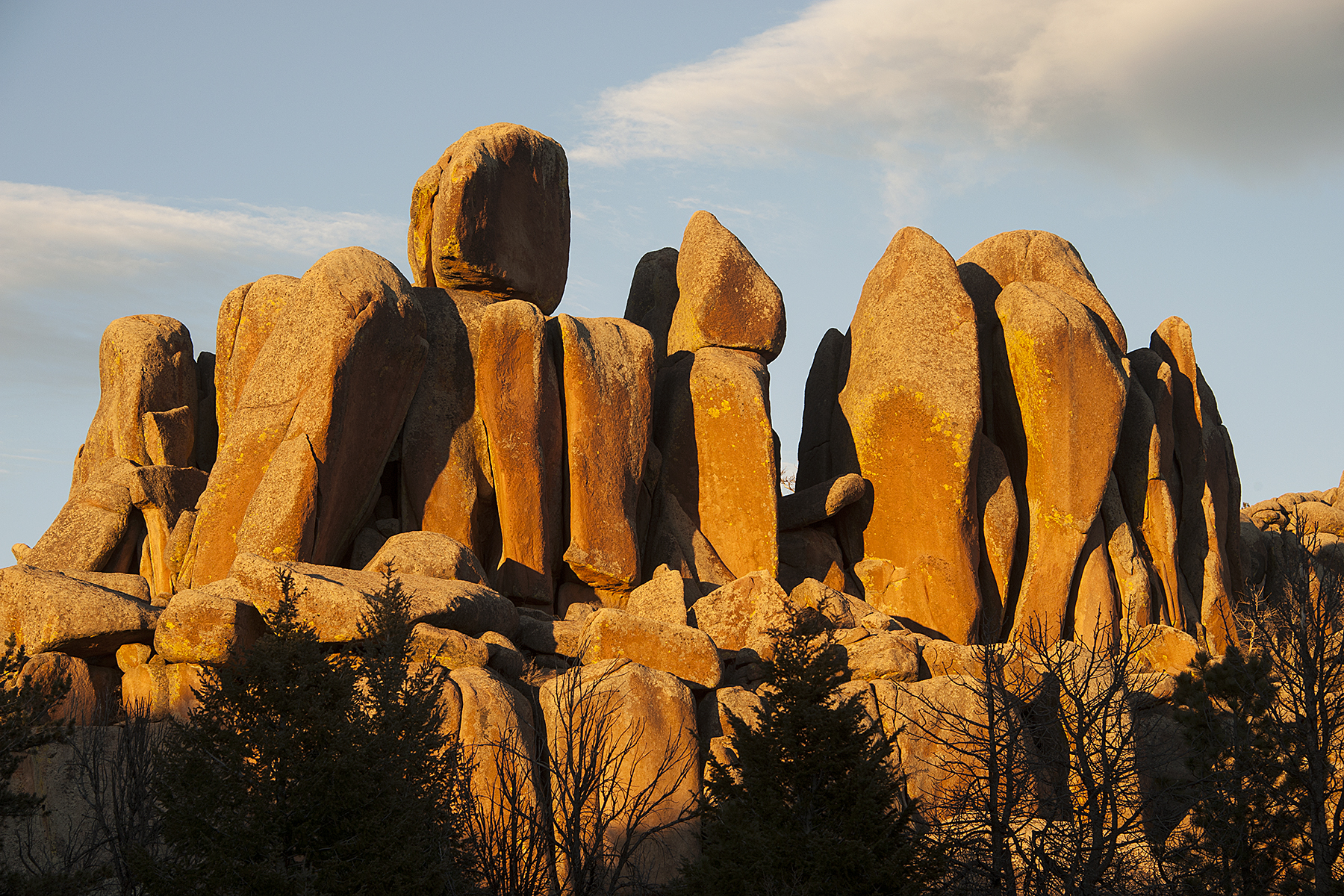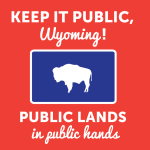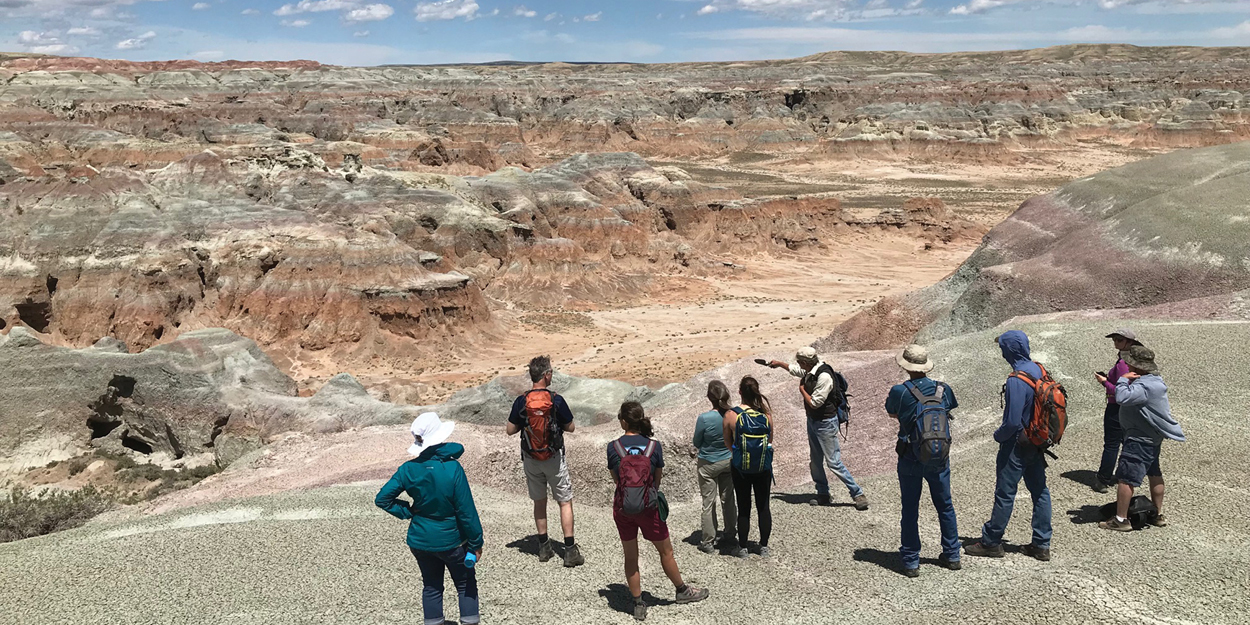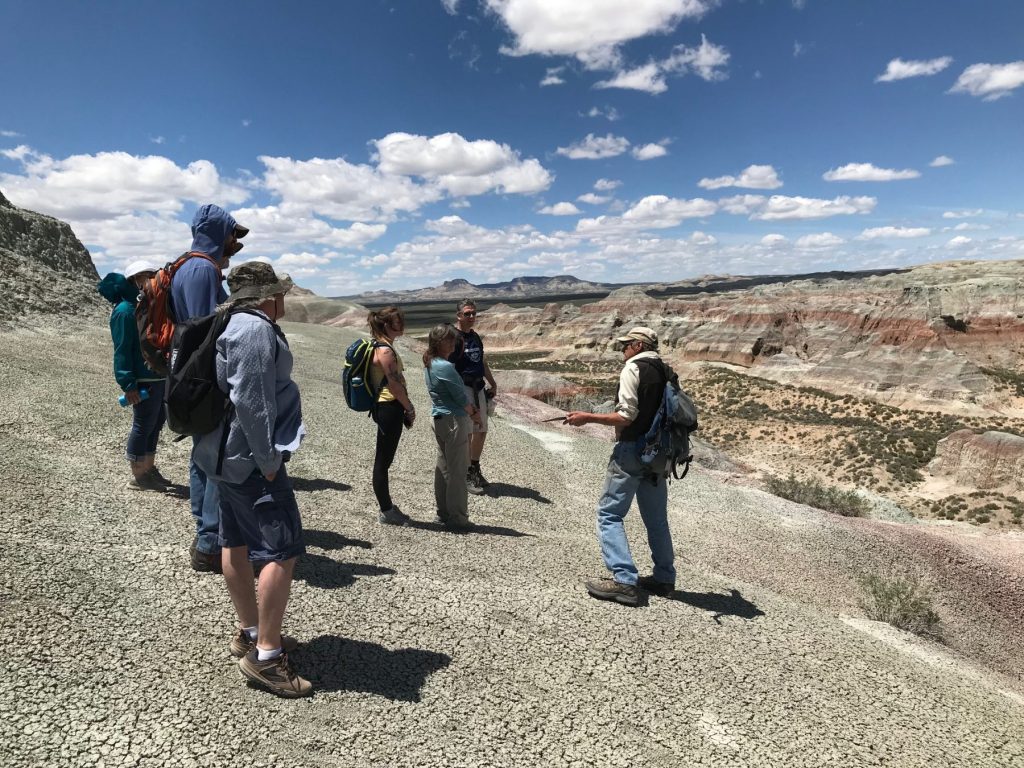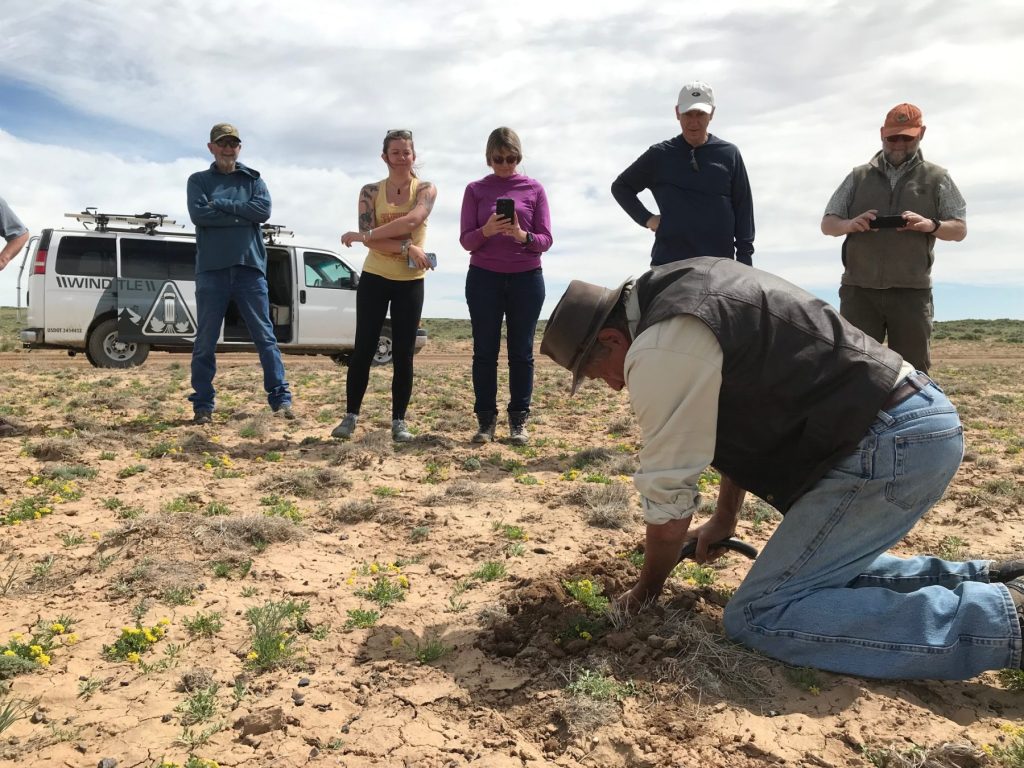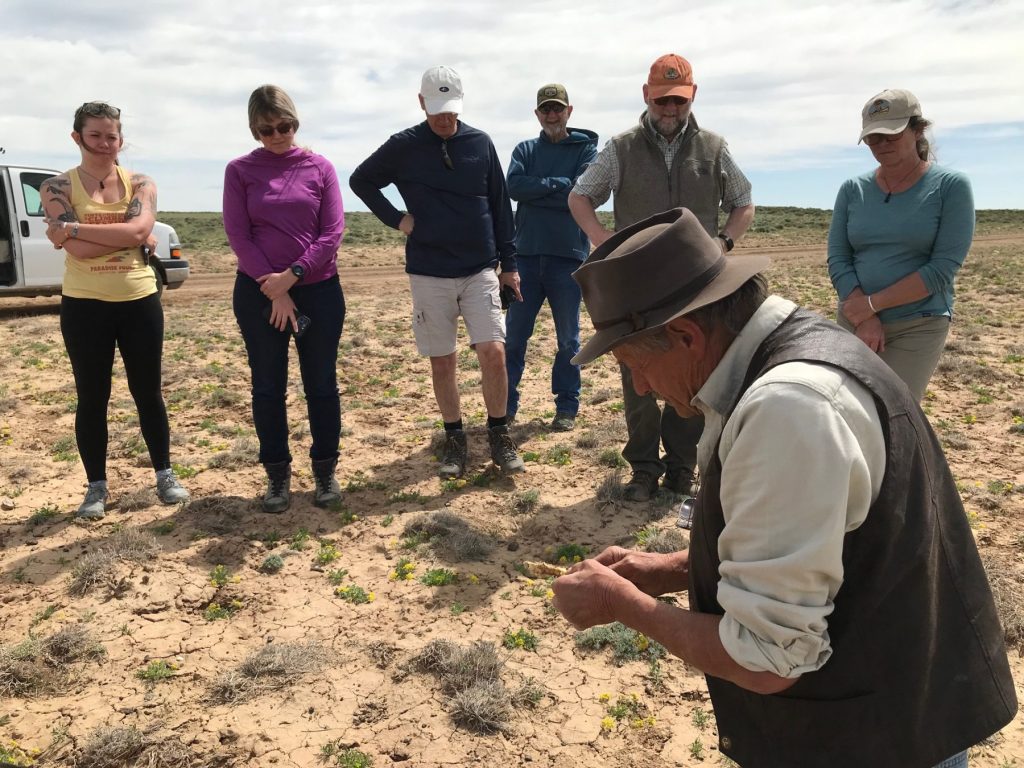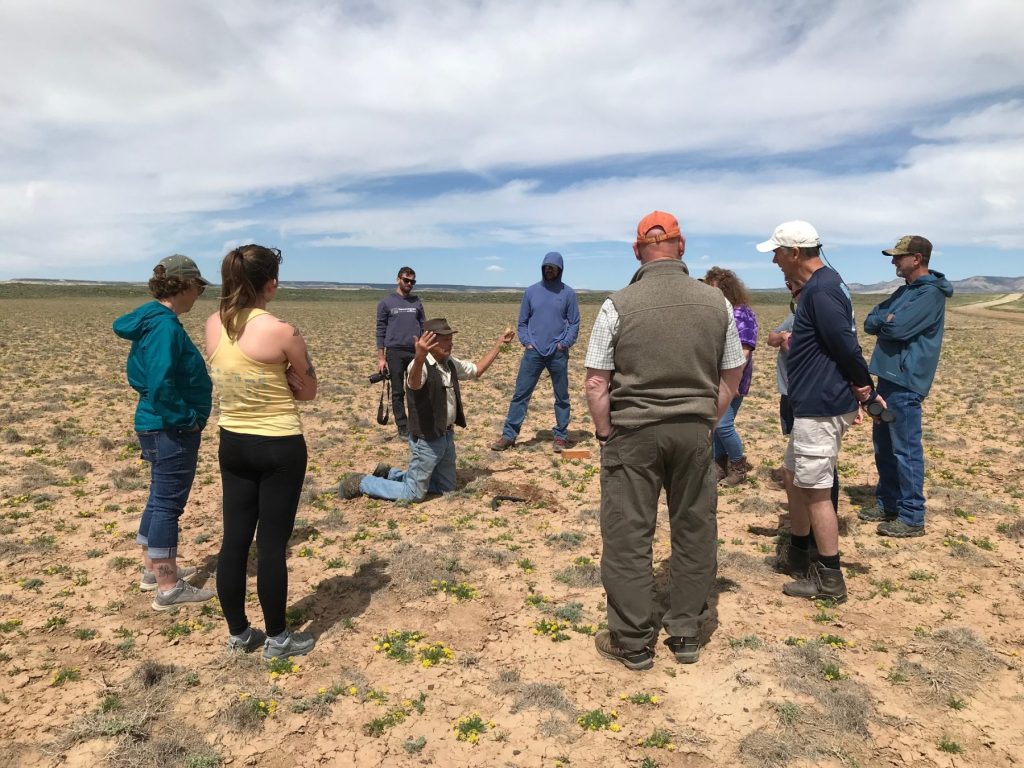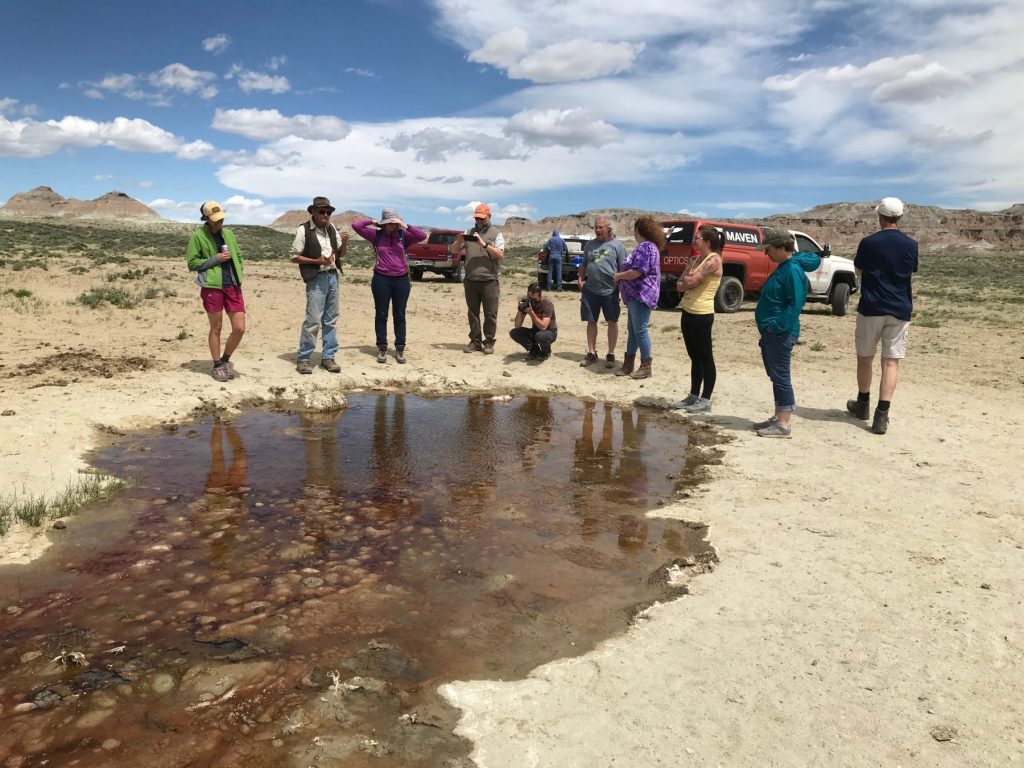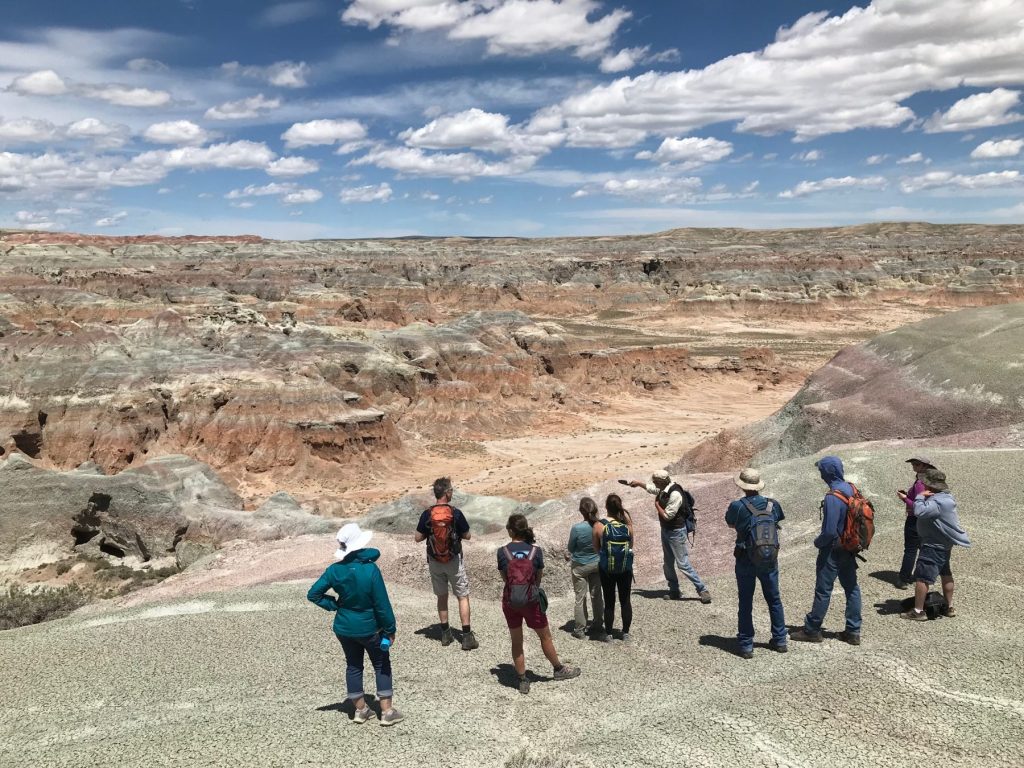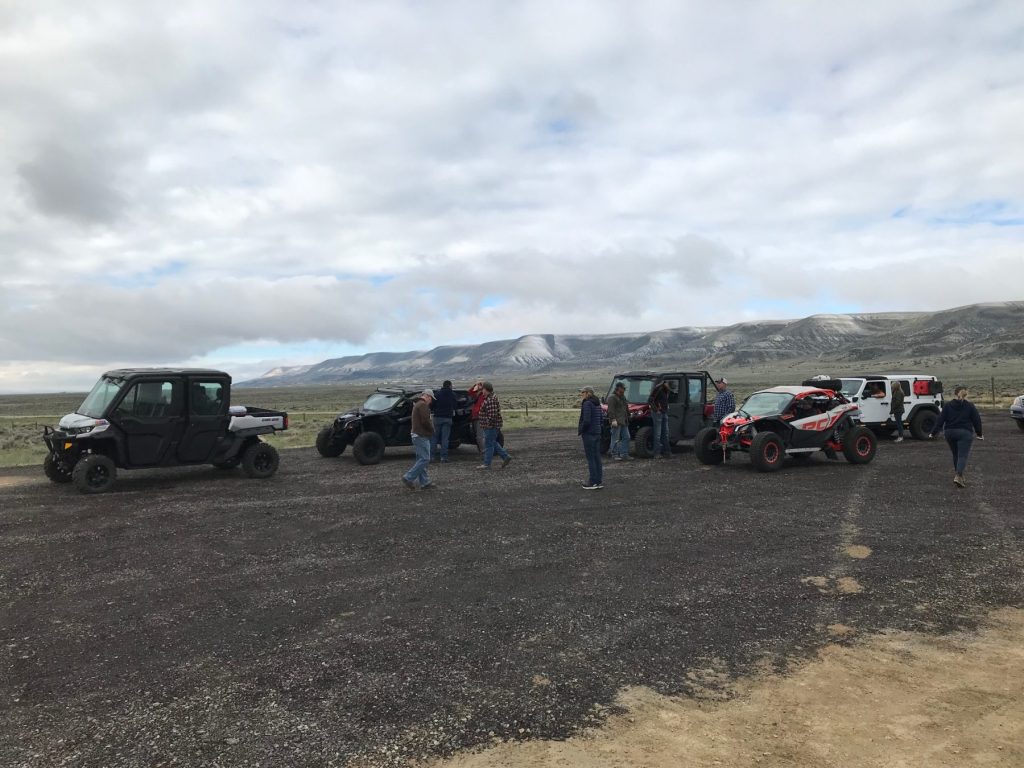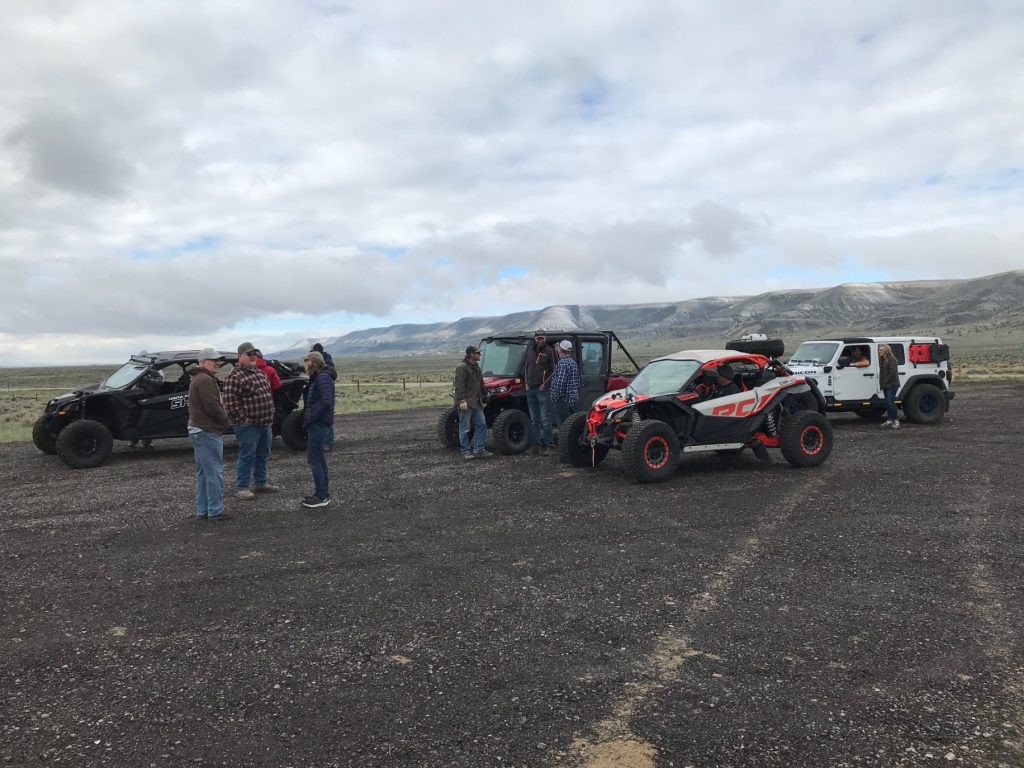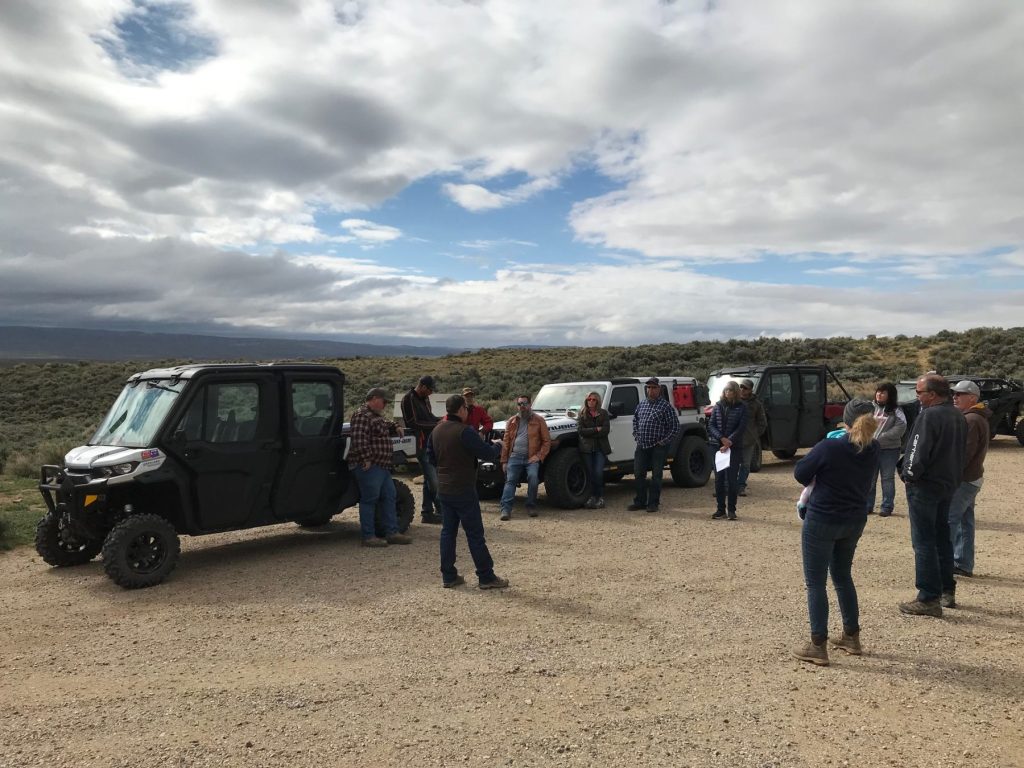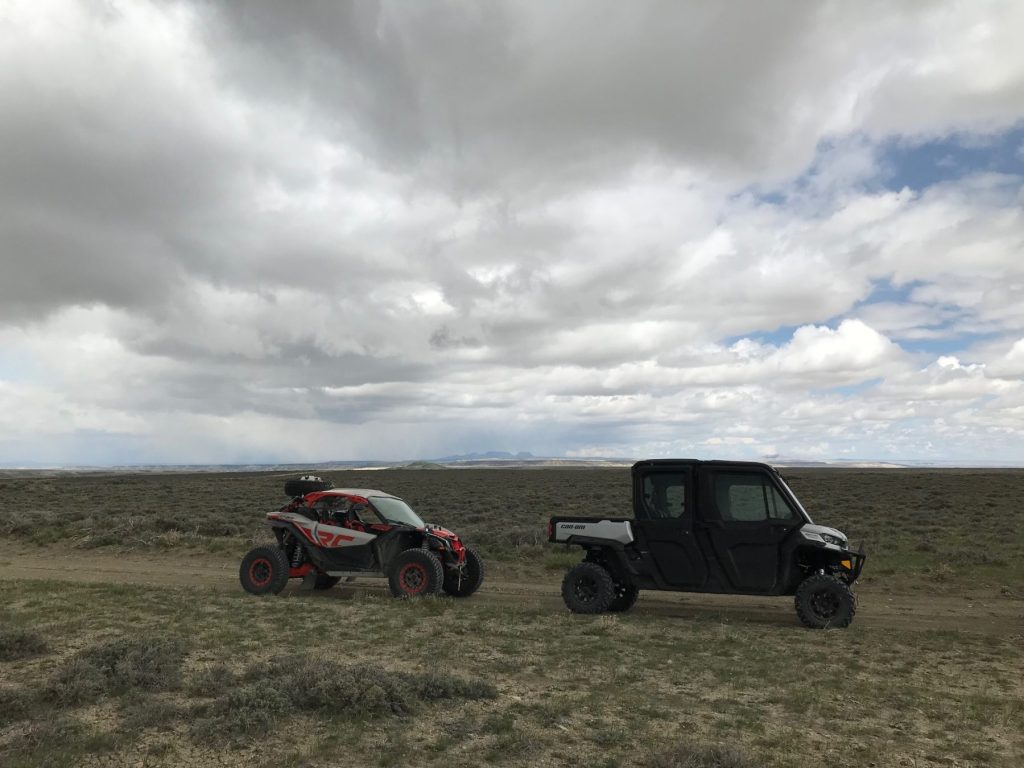IN A FUN EFFORT TO HELP LOCAL WILDLIFE HABITAT, the Wyoming Outdoor Council teamed up with the Wyoming Wilderness Association and the Bureau of Land Management to host a volunteer stewardship day to improve over a mile and a half of fencing in the Big Sandy foothills outside Boulder, Wyoming. This fence modification project, led by BLM sage-grouse specialist Nate Fronk, offers critical changes to traditional fencing so that pronghorn, mule deer, and Greater sage-grouse can safely pass unharmed. Alongside staff from WOC, WWA, and BLM, six Wyomingites volunteered their Saturday to make this landscape a better place.
Traditional fencing across Wyoming is composed of four barb-wire rows, with the top line at 50 inches and the bottom at 12 inches. Studies show that sage-grouse fly at 50 inches on average, and often collide with the top fence wire, which is a significant contributor to sage-grouse fatalities in the area. Mule deer also have a difficult time jumping over fencing at that height, and pronghorn struggle to duck underneath the bottom line.
Luckily, a few simple alterations can turn this cumbersome barrier into an easy passage. The bottom barb-wire line is replaced with a smooth wire and raised to 18 inches, allowing pronghorn to duck underneath without injury. The top wire is lowered to 40 inches, which dramatically reduces sage grouse fatalities and makes it easier for mule deer to jump over it. While these minor modifications have a huge benefit to local wildlife, it does not compromise any functionality in keeping cattle and livestock where they’re supposed to be.
This is a great example of simple solutions that have a huge impact, making our ecosystems healthier while still serving the needs of our livestock and grazing industries. Thanks to the good work of volunteers, this stretch of fence will no longer endanger our beloved wildlife.
The Wyoming Outdoor Council is always looking for volunteers to help improve our public lands and wildlife habitat. If you’re interested in helping out on a stewardship day or other project, please sign up to receive updates to learn about how you can help maintain Wyoming’s environment and quality of life for future generations.
